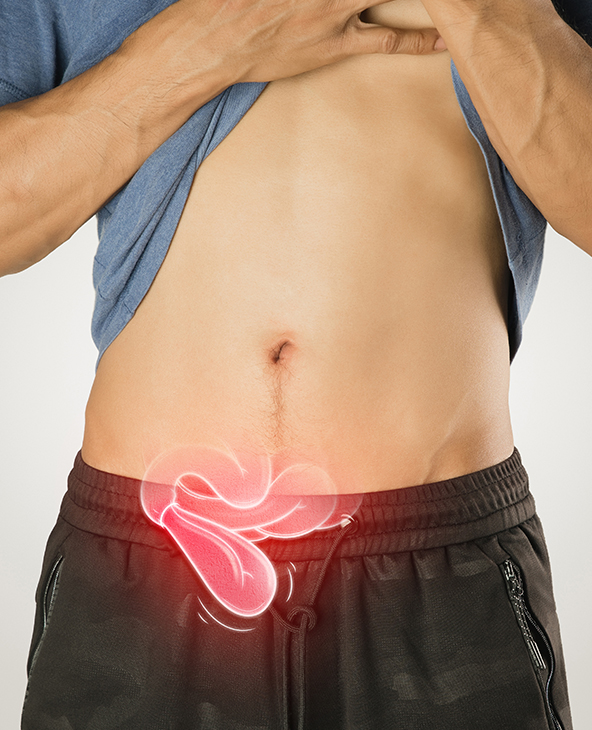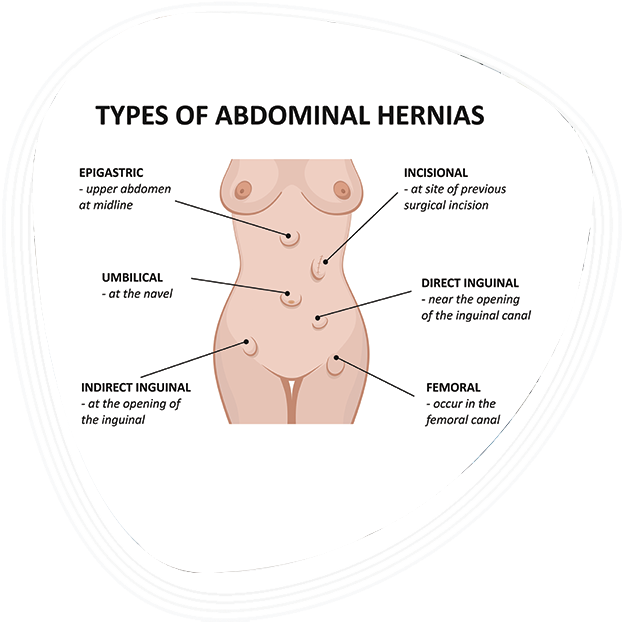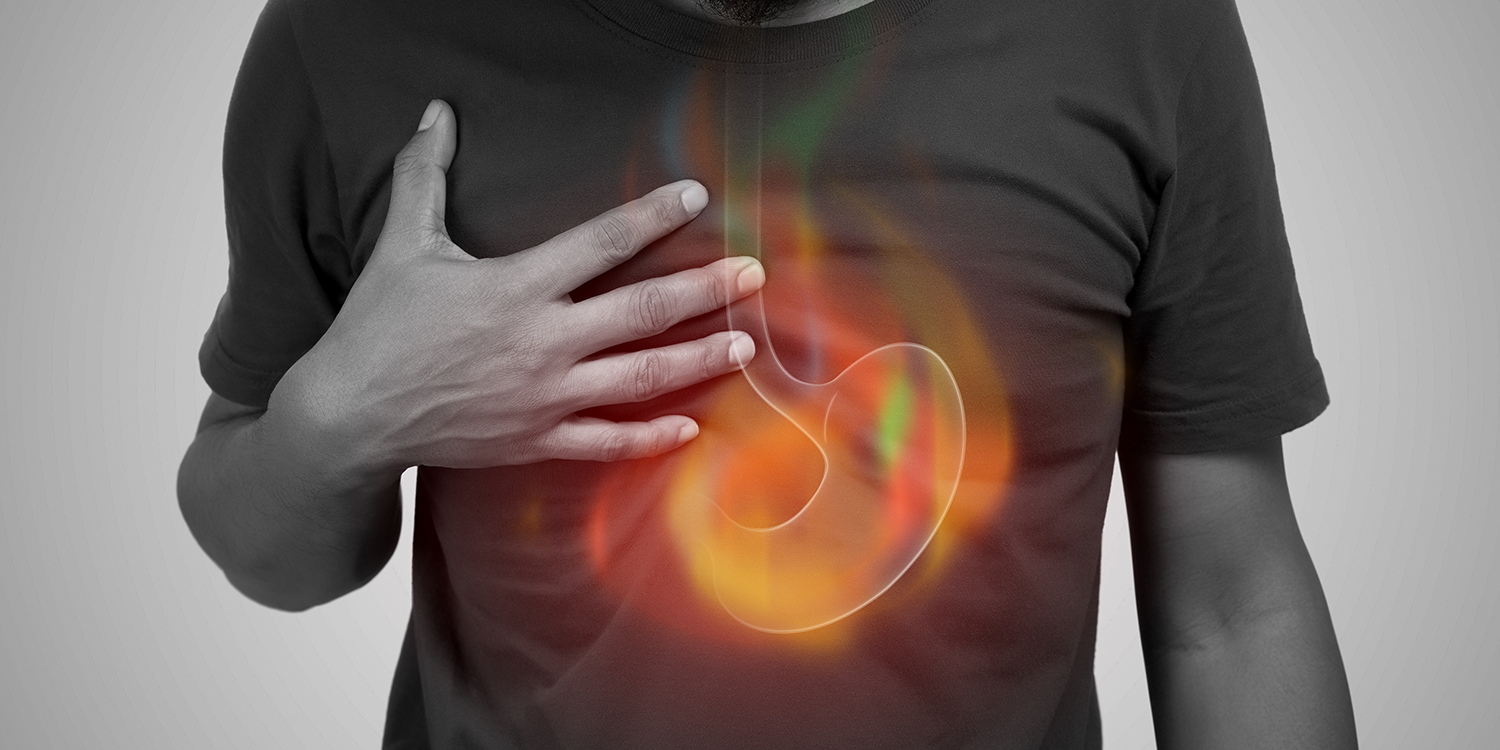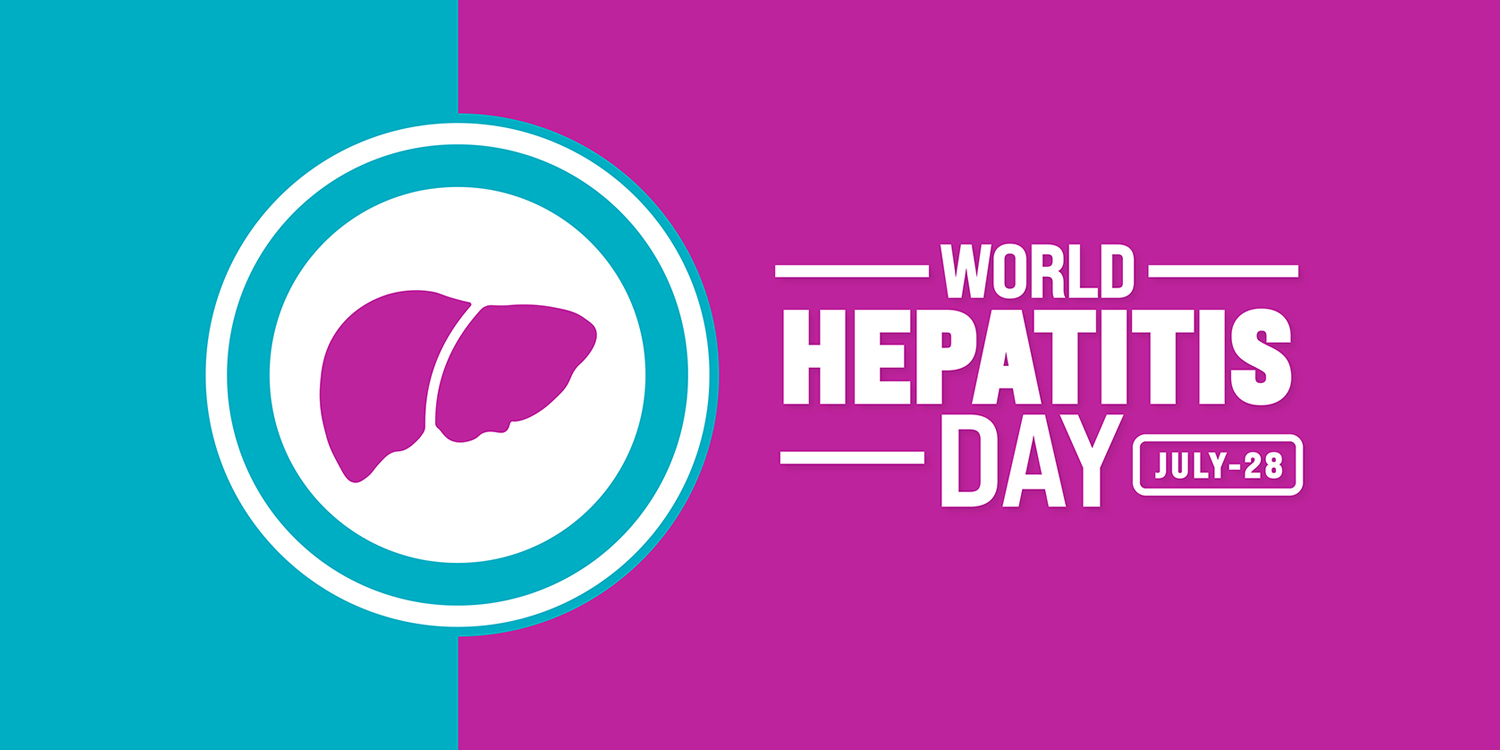A hernia is a small swelling or discomfort that worsens with coughing, bending, or lifting, but what begins as a minor inconvenience can progress into a serious problem if not treated in time. At Graphic Era Hospital, Dehradun, we provide advanced and reliable care for all types of hernias, ensuring every patient receives individualised treatment tailored to their condition. Our team of highly skilled surgeons, supported by experienced anaesthetists, nurses, and rehabilitation specialists, combine minimally invasive techniques with evidence-based practices to promote faster recovery, less discomfort, and long-term relief. With dedicated specialists working together in a collaborative environment, Graphic Era Hospital has become a trusted centre in Uttarakhand for safe, effective, and patient-focused hernia treatment.
What is a Hernia and Types of Hernia
A hernia occurs when an internal organ, fatty tissue, or part of the intestine pushes through a weak spot or opening in the surrounding muscle or connective tissue. It often appears as a noticeable bulge under the skin, especially in the abdomen or groin area. While some hernias may cause only mild discomfort, others can lead to complications if not treated promptly. The main types of hernia treated at Graphic Era Hospital include:

- Inguinal hernia: Develops in the groin, most common in men
- Femoral hernia: Occurs in the groin, more frequent in women
- Umbilical hernia: Appears around the belly button
- Ventral/Epigastric hernia: Forms in the abdominal wall
- Incisional hernia: Develops at the site of a previous surgical scar
- Hiatal hernia: Occurs when part of the stomach moves into the chest, often causing reflux
- Less common hernias: Hernias, such as perineal and congenital diaphragmatic hernias, usually require specialised care
When Should You See a Surgeon?
Even if a hernia seems small or painless, early consultation with a surgeon is important to prevent complications. Delaying treatment may increase the risk of obstruction or strangulation, which can be life-threatening. You should seek medical advice if you notice:
- A bulge in the abdomen or groin that increases when coughing or straining
- Persistent discomfort, heaviness, or dragging sensation
- Pain or swelling that interferes with lifting, walking, or daily activities
- Symptoms of reflux or chest discomfort (hiatal hernia)
- A bulge at the site of a previous surgical scar
- Swelling in infants around the groin or belly button
- Sudden severe pain with a bulge that cannot be pushed back
- Redness or discolouration over the swelling
- Nausea, vomiting, or inability to pass stool or gas
- Fever along with worsening abdominal pain
How Hernias Are Diagnosed
Most hernias are diagnosed through a physical examination, but imaging tests are sometimes required to confirm the type and severity. At Graphic Era Hospital, surgeons use modern diagnostic tools to ensure accurate assessment. Diagnostic methods for Hernias include:
- Physical examination with a cough impulse test
- Ultrasound of the abdominal wall or groin
- X-ray or contrast studies if bowel obstruction is suspected
- Endoscopy to detect hiatal hernia and reflux
- CT scan for complex, recurrent, or incisional hernias
Treatment Options for Hernia
Surgery is the only definitive treatment for hernia, as the condition does not resolve on its own. The choice of procedure depends on the hernia type, size, and the patient’s overall health. Treatment options include:
- Watchful Waiting: This approach is used only for very small hernias that do not cause any pain or discomfort. The doctor will regularly monitor the hernia to check if it grows or starts causing symptoms.
- Open Hernia Repair: In this traditional method, the surgeon makes a cut over the hernia and pushes the bulging tissue back into place. The weak muscle area is then stitched and often reinforced with a mesh to prevent the hernia from coming back.
- Laparoscopic Hernia Repair (TEP/TAPP): This is a minimally invasive procedure done through small keyhole cuts using a camera and special instruments. It causes less pain, leaves smaller scars, and usually allows faster recovery than open surgery.
- Hiatal Hernia Repair with Anti-Reflux Surgery: This procedure is done when part of the stomach pushes into the chest through the diaphragm, causing acid reflux. The surgeon pulls the stomach back to its normal position and strengthens the opening to stop reflux.
- Incisional or Ventral Hernia Repair: These hernias develop at the site of a previous surgery. Surgeons may use advanced methods like component separation to bring the muscles back together and place a mesh for strong support.
- Day-Care Hernia Surgery: In selected cases, patients can have their hernia repaired and go home the same day. This is done under safe monitoring to ensure a quick recovery without the need for an overnight hospital stay.
Why Choose Graphic Era Hospital for Hernia Treatment in Dehradun?

Causes and Risk Factors for Hernia
Hernias develop when muscle or tissue walls weaken, allowing internal organs to push through. This weakness may be present from birth or develop over time due to strain on the abdominal wall. Common causes and risk factors include:
- Family history or congenital weakness: Genetic factors can predispose a person to hernias
- Chronic cough, constipation, or urinary straining: Repeated pressure inside the abdomen weakens muscles
- Obesity or sedentary lifestyle: Extra weight puts stress on abdominal tissues
- Heavy lifting or strenuous activity: Increases pressure and risk of hernia formation
- Pregnancy or multiple deliveries: Stretches and weakens abdominal muscles
- Prior abdominal surgery: Scar tissue can become a site for incisional hernia
- Smoking: Impairs healing and weakens connective tissue
- Ageing or long-term steroid use: Reduces muscle strength and tissue resilience
Prevention and Recovery Tips
Certain lifestyle changes can reduce the risk of developing a hernia and support healing after surgery, such as:
- Maintain a healthy weight: Reduces strain on abdominal muscles and lowers the pressure that can cause a hernia to form or return.
- Manage chronic cough and constipation: Prevents repeated pressure inside the abdomen that can weaken muscles.
- Avoid heavy lifting after surgery: Following medical advice about lifting restrictions allows the muscles to heal fully.
- Quit smoking: Improves tissue healing and overall recovery by increasing blood flow and oxygen supply.
- Follow wound care and activity plans: Helps ensure safe and timely healing by keeping the surgical site clean and avoiding strain. Regular follow-up visits with the doctor can track progress and catch any issues early.
Top Procedures
- Laparoscopic inguinal hernia repair (TEP/TAPP)
- Open Lichtenstein mesh repair
- Umbilical and epigastric hernia repair
- Laparoscopic ventral/incisional hernia repair
- Hiatal hernia repair with anti-reflux surgery
- Recurrent hernia repair
Blog
Frequently Asked Questions (FAQs)
Do all hernias require surgery?
Not every hernia needs immediate surgery. Small, painless hernias may be monitored for changes, but most eventually require repair to avoid complications.
Is laparoscopic hernia surgery better than open repair?
Laparoscopic surgery generally means smaller cuts, less pain, and quicker recovery. However, the choice depends on the hernia type, size, and patient health.
What is the difference between inguinal, femoral, and umbilical hernia?
An inguinal hernia occurs in the groin, a femoral hernia develops in the upper thigh/groin area (more common in women), and an umbilical hernia forms near the belly button.
Is a sports hernia the same as a true hernia?
No. A sports hernia, also called athletic pubalgia, is a muscle or tendon injury in the groin, not a true hernia, though symptoms may feel similar.
How long is the recovery after hernia surgery?
Most patients can resume light activity within a week after laparoscopic surgery and return to full activity in 3–4 weeks, depending on the type of repair.
Which surgeon should I consult for hernia treatment near me in Dehradun?
Consult a general or laparoscopic surgeon. At Graphic Era Hospital, experienced surgeons provide specialised hernia treatment for all types.
How can I book a consultation near me for hernia surgery?
To consult a hernia surgeon at Graphic Era Hospital, call at 1800-889-7351 and our team will help you schedule an appointment and guide you through the process.





